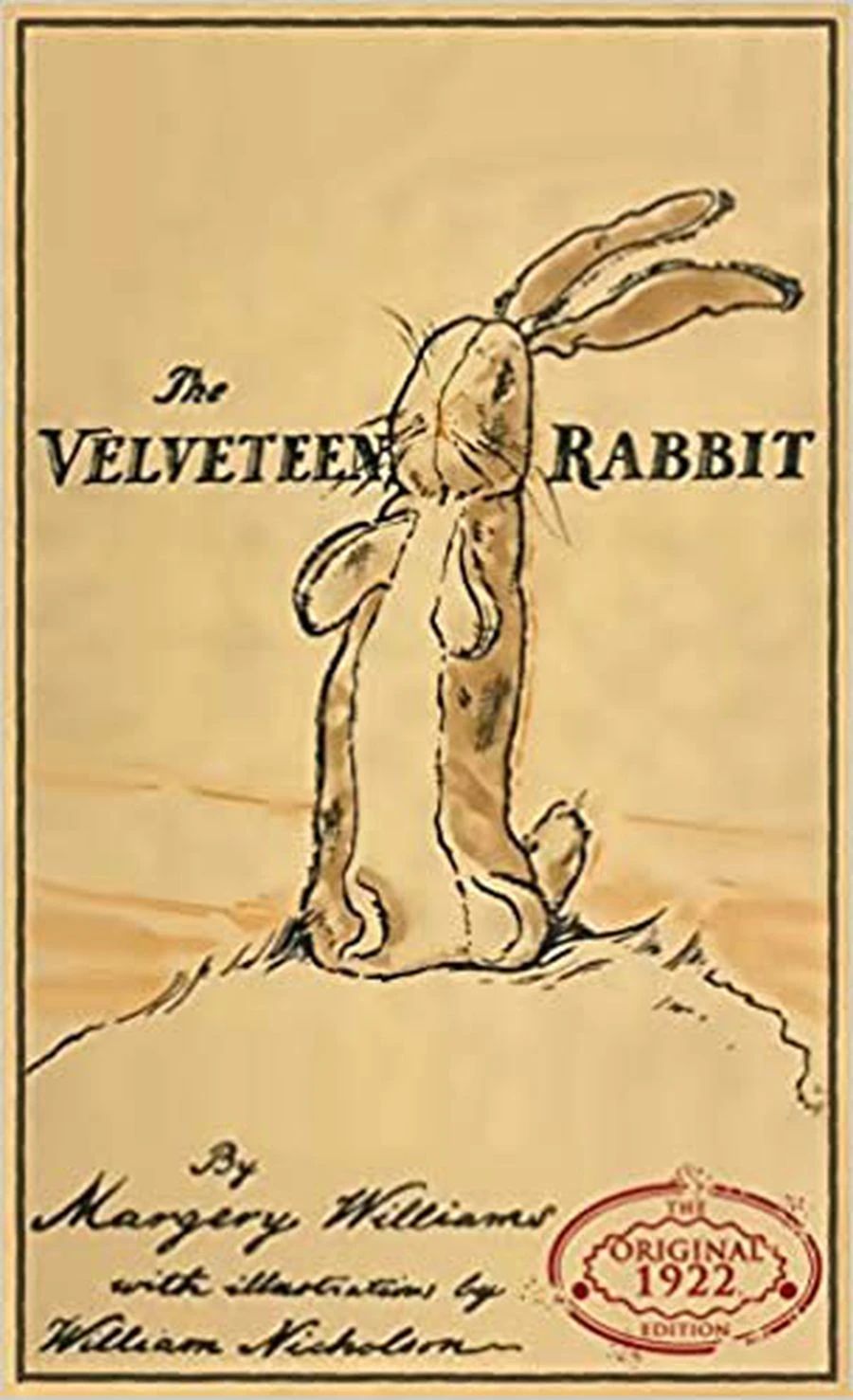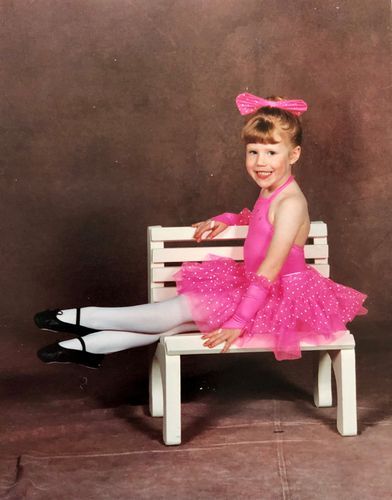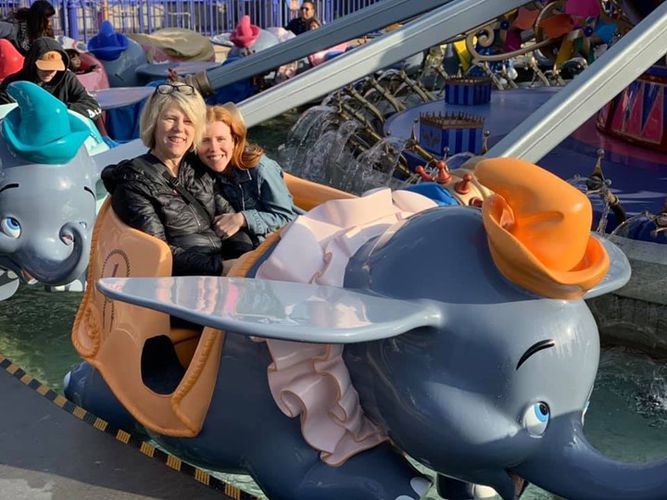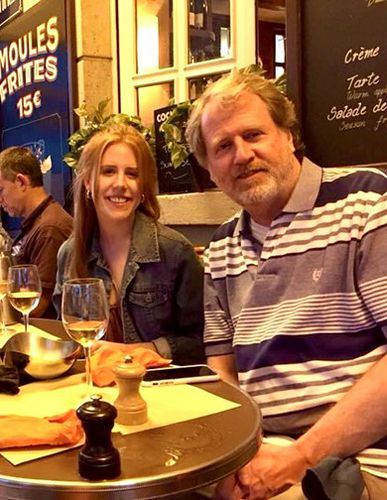Despite her physical affliction, she dances, teaches her dad that suffering can be a gift and shows that she is, above all else, "remarkably Real."

(Photo courtesy of Logan Sorenson and RDT) Megan O'Brien dances
with Repertory Dance Theatre.
Fifty years ago, I stumbled upon a book now a hundred years old that I expect my daughter and I will continue to love together for as long as fate and future allow.
As a child, I liked rough and tumble outdoor play, but I loved to sit on a chair indoors surrounded by our family's collection of encyclopedias. Words were close and familiar friends. From an early age, I spoke their language.
So I was surprised one day to confront a word I did not know: velveteen. I had swapped out my usual encyclopedias for a collected set of children's tales. My curiosity about the unfamiliar and unusual word drew me deeper into the story mentioning it.
It was enchanting, a short narration about a toy stuffed rabbit wondering what it meant to be real. British writer Margery Williams published "The Velveteen Rabbit (or How Toys Become Real)" in 1922, a century ago this year. Although I encountered the story many years post-publication, I possessed the same real curiosity as its floppy-eared protagonist.

"The Velveteen Rabbit" debuted in 1922.
The plot intrigued me. The plush rabbit, a Christmas gift to a young boy, is loved for a time but soon discarded in favor of newer toys. Over the years, the sawdust-filled rabbit is snubbed by more expensive toys and either loved or ignored, contingent on the fleeting whims of the boy and the attractive features of other toys.
Confused by this plight, and after encountering living rabbits frolicking outside, the Velveteen Rabbit contemplates what is real. When the boy is sick with scarlet fever, the comfortable old toy comes back into favor. After the boy recovers, however, the germ-filled rabbit is dispatched to the trash heap, finally becoming real as a fiery end approaches.
Throughout the ordeal and journey, the wisdom of a friendly fellow toy — an old Skin Horse — sustains the Velveteen Rabbit. Eventually, the Skin Horse explains to the dilapidating rabbit, "By the time you are Real, most of your hair has been loved off, and your eyes drop out and you get loose in the joints and very shabby. But these things don't matter at all, because once you are Real you can't be ugly, except to people who don't understand."
Later, as a father, I remembered and read this lovely little book to my own three children. They all liked it, but one — my middle daughter, Megan — loved it.
She even had her own version of the toy, a plush pink stuffed animal she called "Care Bear." I spent many a frantic moment searching for Care Bear right before bedtime, knowing that little Megan would not consider the possibility of sleep without it.
Ironically, like the Velveteen Rabbit, Megan has faced her own difficult ordeal and journey.
Dancer gets a diagnosis

(Photo used with permission of George Karahalios, GP Studios.
George Karahalios, GP Studios.) Megan O'Brien from her
childhood dancing days.
From early childhood, Megan has enjoyed the gift of tremendous flexibility and a passion for dance. She has pursued this passion with vigor and determination, finding remarkable success and even acclaim. She earned a scholarship to one of the top college dance programs in the country at the University of Utah.
Beginning in her early teens, however, she also has suffered from a number of serious health setbacks. She has had sharp and mysterious stabbing pains in her back, all sorts of digestive issues, debilitating headaches, overwhelming fatigue and fainting spells. Although she continued to dance, and finished her college degree on time, she has had little energy for much else.
Megan's disability has attracted some surprising and hurtful antagonism. So-called friends have suggested she was faking it for attention. (Imagine the self-control required for a loving father not to hurl such unthinking fools into the far reaches of hell.)
Because Megan looks fine on the outside, even when she feels very sick, many emergency room attendants and general practice physicians have been mystified by or even skeptical about her condition. Some suggested she just needed antidepressants or psychotherapy.
Her mother, Vicki, knew better. Despite such discouraging medical advice, and with a lot of independent research, consultation with support groups, courageous persistence, and even prayer, Vicki and Megan finally found some doctors and therapists who cared enough to dig for better and more accurate answers.
It turns out that Megan has a genetic condition called Ehlers-Danlos syndrome (EDS) and various other autonomic nerve disorder complications. According to the Mayo Clinic website, "EDS is a group of inherited disorders that affect your connective tissues — primarily your skin, joints and blood vessel walls."
Because it is a genetic condition, Vicki's dogged efforts to get Megan properly diagnosed also revealed that Vicki lives with the same condition.

(Photo courtesy of Michael Patrick O'Brien) Vicki O'Brien
and daughter Megan O'Brien take a spin at Disneyland.
With some clarity as to what is wrong, we have been able to try to fix it. Megan has had a number of surgeries and therapeutic procedures to alleviate her symptoms, with mixed success. Her lifetime endeavor will be dealing with EDS and related conditions.
She does it with pluck and grace. She dances and choreographs with Repertory Dance Theatre, a professional arts company in Salt Lake City. She often drags herself out of bed and vomits for the privilege of making art, one rehearsed kick, lift or turn at a time. Daily, she tolerates nausea that hovers above five on the 10 scale. Other dancers take breaks to rest; Megan takes time off for intravenous fluids.
While Vicki has helped Megan understand and confront the underlying physical health problem, my own job has been to try to help with spirit and morale. As a result, Megan and I talk often about life and what it might mean.
She is philosophical and introspective, perhaps the product of a Judge Memorial Catholic High School education. Once, she surprised me by reporting that she has received "the gift of suffering."
How suffering can be a gift

(Courtesy of Michael Patrick O'Brien) Megan O'Brien and her
father, Michael Patrick O'Brien, dine in Paris.
I've never viewed her suffering as a gift, choosing instead to froth at the mouth and howl at the moon in anger that a talented young woman must be so unfairly burdened during the morning of her lifetime. Although Megan tires of being so often sick in her 20s, she also manages to see her condition in a much better light than me.
"Dad, I think my suffering is a gift," she explained one day, "because it not only helps me appreciate the moments when I am not sick, but it allows me to truly understand and feel compassion for the struggles of others."
Empathy. If you look the word up in the dictionary, you'll find Megan's picture there...maybe twice. Frankly, I was floored to hear her describe as a gift the very thing I have often considered a cruel and hateful curse that just might prove the nonexistence of a benevolent God.
In a similar conversation, she told me how she often remembers and takes great comfort from a book we read together when she was a little girl. Yes, it's about a Velveteen Rabbit.
Megan loves the Skin Horse's profound insight that Real is not how you are made, but rather is something that happens over time, and not always "to people who break easily, or have sharp edges, or who have to be carefully kept." Instead, one becomes Real by being both liked and discarded...worn down over time by love but also through a gantlet of slings and arrows.
One becomes Real by using guts and persistence and resilience to find a small meadow to hop about in, a simple garden spot within the limitless and harsh expanse of the universe.
One of my Utah Trappist monk friends, Brother Nick Prinster, a rugged cattle rancher, also understood suffering and its meaning. He once wrote, "We are all of us broken. We live by mending, and the glue that we are mended with is the grace of God, and what is the grace of God but love?"
I now get why my daughter Megan loved this book — instinctively and immediately — when we read it together. It was a mysterious cosmic moment, when two like things somehow find each other and dance to the music of harmonic synchronicity.
When I first read Margery Williams' century-old classic story as a young boy, I turned to the dictionary. I learned that the word "velveteen" means a type of cloth made to imitate velvet. It took many years of being a father with a suffering child, however, to truly understand that definition.
If living a "normal" life is velvet, my daughter is velveteen, but she is no mere imitation of anything or anyone.
No, my daughter Megan is undeniably and remarkably and miraculously Real.
Originally published by The Salt Lake Tribune.
The content of this article is intended to provide a general guide to the subject matter. Specialist advice should be sought about your specific circumstances.

